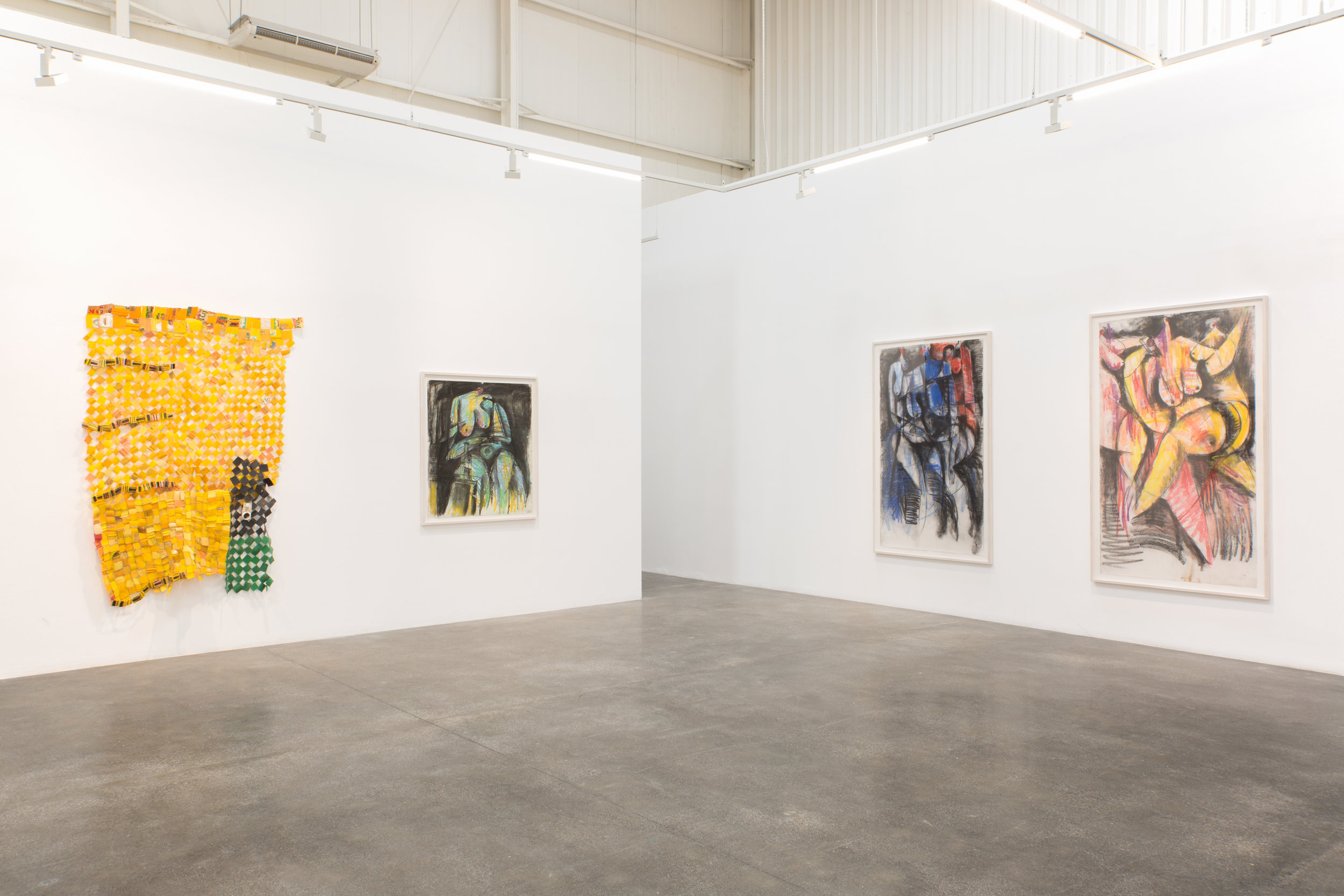Serge Attukwei Clottey: The Displaced
Serge Attukwei Clottey, Too far from home, 2017, Plastics, wires, and oil paint, 147.32 x 198.12 cm, Courtesy the artist and Gallery 1957
Carving up the canary yellow reinforced plastic water gallon bottles that are ubiquitous across Ghana’s capital city Accra, is a physically tough job. By cutting them into small squares and then weaving the pieces back together into sculptural tapestries, Serge Attukwei Clottey examines the powerful agency of this everyday object as well as creating tactile art pieces that highlight Ghana’s water crisis as well as soaring levels of pollution.
Clottey is a well-established artist in West African circles and his performance – My Mother’s Wardrobe – in which he paraded through the streets wearing his deceased mother’s clothing formed part of the inaugural exhibition of Gallery 1957 in Accra. Last year his work was presented at 1:54 Contemporary African Art Fair at London’s Somerset House and this month, audiences in the UAE are being exposed to his work as part of the Gallery Takeover – a collaborative agreement between Gallery 1957 and Dubai’s Lawrie Shabibi.
Working across installation, performance, photography and sculpture, Clottey explores personal and political narratives rooted in histories of trade and migration. The water-gallon can tapestries hang bright and proud on the walls alongside engaging charcoal drawings which reference Cubism.
Installation view of The Displaced, Serge Attukwei Clottey's solo exhibition as part of the Gallery Takeover by Gallery 1957 at Lawrie Shabibi Gallery, Dubai. Image courtesy of Lawrie Shabibi.
The unfinished gestural movements in the charcoal pieces submit the vibrancy and energy of Clottey’s practice and when paired with the video that shows the migration story of the Clottey family, a depth to this artist’s work emerges.
Personally, I found this exhibition exciting and fascinating. I really enjoyed discovering Clottey’s work and being introduced to the concerns of his particular region. I also found the charcoal drawings engaging and compelling.
The fact that Lawrie Shabibi offered its gallery space and platform to offer exposure to a young and ambitious gallery is commendable and offers audiences an unprecedented insight into a geographical area that is not often highlighted in Dubai. Also, there is something very refreshing and inspiring when galleries get together and share their resources.
Asmaa Al Shabibi called the venture exciting and said she wanted to inspire other galleries to do the same. “It is fantastic to get people talking about West Africa and our artists and even thinking about coming to Ghana. Also, with an exercise like this, we are changing the context of the art work and showing its strength,” said Victoria Cooke, manager of Gallery 1957.
This year, Gallery 1957 will be participating in Art Dubai for the first time and the fair will have more contemporary African artists on show than ever before. This marks an important time for cross-cultural conversations to be had between West Africa and the Middle East and the Gallery Takeover is a wonderful fermentation ground for further ideas to be sown.
- Gallery Takeover by Gallery 1957 from Accra, Ghana. January 20 - March 3, 2018. Lawrie Shabibi Gallery, Dubai.
Installation view of The Displaced, Serge Attukwei Clottey's solo exhibition as part of the Gallery Takeover by Gallery 1957 at Lawrie Shabibi Gallery, Dubai. Image courtesy of Lawrie Shabibi.



